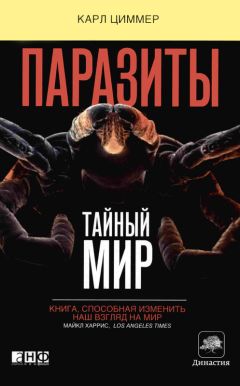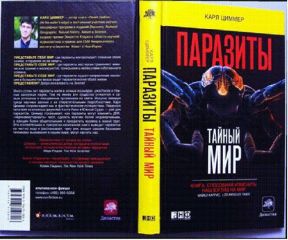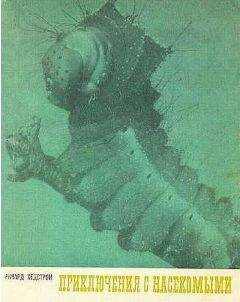Thomson K.S. HMS Beagle: The story of Darwin’s ship. New York: Norton, 1995.
Глава 2: «Это как сознаться в убийстве»Bowler P.J. The eclipse of Darwinism: Anti-Darwinian evolution theories in the decades around 1900. Baltimore: Johns Hopkins University Press, 1983.
Browne E.J. Charles Darwin: A biography. New York: Knopf, 1995.
Chambers R. Vestiges of the natural history of creation. New York: Wiley/Putnam, 1845.
Darwin C. Autobiography and selected letters. New York: Dover, 1958.
____ A monograph on the sub-class Cirripedia, with figures of all the species. London: Ray Society, 1851.
____ A monograph on the fossil Balanidae and Verrucidae of Great Britain. London: Printed for the Palacontographical Society, 1854.
____ On the origin of species by means of natural selection, or The preservation of favored races in the struggle for life. London: John Murray, 1859.
Desmond A.J. Huxley: The devil’s disciple. New York: Penguin, 1994.
____, Moore J.R. Darwin. London: Michael Joseph, 1991.
Jones S. Darwin’s ghost. New York: HarperCollins, 2000.
Malthus T.R. An essay on the principle of population as it affects the future improvement of society. London: J. Johnson, 1798.
Ospovat D. The development of Darwin’s theory: Natural history, natural theology, and natural selection, 1838–1859. Cambridge: Cambridge University Press, 1981.
Rupke N.A. Richard Owen: Victorian naturalist. New Haven, Conn.: Yale University Press, 1994.
Глава 3: Погружаясь вглубь временBowring S.A., Housh Т. “The Earth’s early evolution.” Science, 1995,269: 1535–1540.
Briggs D.E.G., Erwin D.H., Collier F.J. The fossils of the Burgess Shale. Washington: Smithsonian Institution Press, 1994.
Brocks J.J., Log an G.A., Buick R., Summons R.E. “Archean molecular fossils and the early rise of eukaryotes.” Science, 1999, 285: 1033–1036.
Budd C.E., Jensen S. “A critical reappraisal of the fossil record of the bilaterian phyla.” Biological Reviews of the Cambrian Philosophical Society, 2000, 75: 253–295.
Burchfield J.O. Lord Kelvin and the age of the Earth. New York: Science History Publications, 1975.
Carroll R.L. Vertebrate paleontology and evolution. New York: Freeman, 1988.
Dalrymple G.B. The age of the Earth. Stanford, Calif.: Stanford University Press, 1991.
Fortey R.A. Life: A natural history of the first four billion years of life on Earth. New York: Knopf, 1998.
Gould S.J. Wonderful life: The Burgess Shale and the nature of history. New York: Norton, 1989.
Knoll A.H. “A new molecular window on early life.” Science, 1999, 285: 1025–1026.
Lunine J.I. Earth: Evolution of a habitable world. Cambridge: Cambridge University Press, 1999.
McPhee J.A. Annals of the former world. New York: Farrar Straus & Giroux, 1998.
Prothero D.R., Prothero D.A. Bringing fossils to life: An introduction to paleobiology. New York: McGraw-Hill, 1997.
Schopf J.W. Cradle of life: The discovery of Earth’s earliest fossils. Princeton, N.J.: Princeton University Press, 1999.
____ “Solution to Darwin’s dilemma: Discovery of the missing Precambrian record of life.” Proceedings of the National Academy of Sciences, 2000, 97: 6947–6953.
Xiao S., Zhang Y., Knoll A.H. “Three-dimensional preservation of algae and animal embryos in a Neoproterozoic phosphorite.” Nature, 1998, 391: 553–558.
Zimmer C. “Ancient continent opens window on the early earth.” Science, 1999, 286: 2254–2256.
Глава 4: Свидетели переменAdami С. Introduction to artificial life. New York: Springer, 1998.
____, Ofria C, Collier T.C. “Evolution of biological complexity.” Proceedings of the National Academy of Sciences, 2000, 97: 4463–4468.
Adams M.B. The evolution of Theodosius Dobzhansky: Essays on his life and thought in Russia and America. Princeton, N.J.: Princeton University Press, 1994.
Albertson R.C., Markert J.A., Danley P.D., Kocher T.D. “Phylogeny of a rapidly evolving clade: The cichlid fishes of Lake Malawi, East Africa.” Proceedings of the National Academy of Sciences, 1999, 96: 5107–5110.
Bowler P.J. The Norton history of the environmental sciences. New York: Norton, 1993.
Cook L.M., Bishop J.A. Genetic consequences of man-made change. London, England & Toronto: Academic Press, 1981.
Coyne J.A., Orr H.A. “The evolutionary genetics of speciation.” Philosophical Transactions of the Royal Society of London Series B: Biological Sciences, 1998, 353: 287–305.
Dawkins R. The blind watchmaker: Why evidence of evolution reveals a universe without design. New York: Norton, 1996.
____ The selfish gene. New York: Oxford University Press, 1976.
Depew D.J., Weber B.H. Darwinism evolving: Systems dynamics and the genealogy of natural selection. Cambridge, Mass.: MIT Press, 1995.
Dieckmann U., Doebeli M. “On the origin of species by sympatric speciation.” Nature, 1999, 400: 354–357.
Dobzhansky T.G. Genetics and the origin of species. New York: Columbia University Press, 1937.
Goldschmidt T. Darwin’s dreampond: Drama in Lake Victoria. Cambridge, Mass.: MIT Press, 1996.
Grant P.R., Grant B.R. “Non-random fitness variation in two populations of Darwin’s finches.” Proceedings of the Royal Society of London Series B, 2000, 267: 131–138.
____, Royal Society (Great Britain). Discussion Meeting. Evolution on islands. Oxford & New York: Oxford University Press, 1998.
Harris R.S., Kong Q., Maizels N. “Somatic hypermutation and the three R’s: repair, replication and recombination.” Mutation Research, 1999, 436: 157–178.
Henig R.M. The monk in the garden: How Gregor Mendel and his pea plants solved the mystery of inheritance. Boston: Houghton Mifflin, 2000.
Howard D.J., Berlocher S.H. Endless forms: Species and speciation. New York: Oxford University Press, 1998.
Huxley J. Evolution, the modern synthesis. New York & London: Harper & Brothers, 1942.
Janeway C. Immunobiology: The immune system in health and disease. New York: Garland, 1999.
Johnson T.C., Kelts K., Odada E. “The Holocene history of Lake Victoria.” Ambio, 2000, 29: 2-11.
Kondrashov A.S., Kondrashov F.A. “Interactions among quantitative traits in the course of sympatric speciation.” Nature, 1999, 400: 351–354.
Koza J.R. Genetic programming III: Darwinian invention and problem solving. San Francisco: Morgan Kaufmann, 1999.
Lenski R.E., Ofria C., Collier T.C., Adami C. “Genome complexity, robustness and genetic interactions in digital organisms.” Nature, 1999, 400: 661–664.
Mayr E. Systematics and the origin of species, from the viewpoint of a zoologist. New York: Columbia University Press, 1942.
____ The growth of biological thought: Diversity, evolution, and inheritance. Cambridge, Mass.: Belknap Press, 1982.
Provine W.B. The origins of theoretical population genetics. Chicago: University of Chicago Press, 1975.
Rensberger B. Life itself: Exploring the realm of the living cell. New York: Oxford University Press, 1996.
Reznick D.N., Shaw F.H., Rodd F.H., Shaw R.G. “Evaluation of the rate of evolution in natural populations of guppies (Poecilia reticulata)”. Science, 1997, 275: 1934–1937.
Ridley M. Evolution. Cambridge, Mass.: Blackwell Science, 1998.
Sato A., Ohigin C., Figueroa F., Grant P.R., Grant B.R., Tichy H. et al. “Phylogeny of Darwin’s finches as revealed by mtDNA sequences.” Proceedings of the National Academy of Sciences, 1999, 96: 5101–5106.
Simpson G.G. Tempo and mode in evolution. New York: Columbia University Press, 1984.
Stiassny M., Meyer A. “Cichlids of rift lakes.” Scientific American, 1999, 280: 64–69.
Taubes G. “Evolving a conscious machine.” Discover, June 1998, 73–79.
Wade M.J., Goodnight C.J. “Wright’s shifting balance theory: An experimental study.” Science, 1991, 253: 1015–1018.
Weiner J. The beak of the finch: A story of evolution in our time. New York: Knopf, 1994.
____ Time, love, memory: A great biologist and his quest for the origins of behavior. New York: Knopf, 1999.
Глава 5: Как укоренялось древо жизниAndersson S.G., Zomorodipour A., Andersson J.O., Sicheritz-Ponten Т., Alsmark U.C., Podowski R.M., et al. “The genome sequence of Rickettsia prowazekii and the origin of mitochondria.” Nature, 1998; 396: 133–140.
Barns S.M., Fundyga R.E., Jeffries M.W., Pace N.R. “Remarkable archaeal diversity detected in a Yellowstone National Park hot spring environment.” Proceedings of the National Academy of Sciences, 1994, 91: 1609–1613.
Cech T.R. “The ribosome is a ribozyme.” Science, 2000, 289: 878–879.
Doolittie W.F. “Uprooting the tree of life.” Scientific American, February 2000, 90–95.
Freeland S.J., Knight R.D., Landweber L.F. “Do proteins predate DNA?” Science, 1999, 286: 690–692.
Ganfornina M.D., Sanchez D. “Generation of evolutionary novelty by functional shift.” Bioessays, 1999, 21: 432–439.
Gee H. In search of deep time: Beyond the fossil record to a new history of life. New York: Free Press, 1999.
Gesteland R.F., Cech Т., Atkins J.F. The RNA world: The nature of modern RNA suggests a prebiotic RNA. Cold Spring Harbor, N.Y.: Cold Spring Harbor Laboratory Press, 1999.
Holland P.W. “Gene duplication: Past, present and future” Seminars in Cellular and Developmental Biology, 1999, 10: 541–547.
Kerr R.A. “Early life thrived despite earthly travails.” Science, 1999, 284: 2111–2113.
Landweber L.F. “Testing ancient RNA-protein interactions.” Proceedings of the National Academy of Sciences, 1999, 96: 11067-11078.
Lazcano A., Miller S.L. “The origin and early evolution of life: prebiotic chemistry, the pre-RNA world, and time.” Cell, 1996, 85: 793–798.
Levin B.R., Bergstrom C.T. “Bacteria are different: Observations, interpretations, speculations, and opinions about the mechanisms of adaptive evolution in prokaryotes.” Proceedings of the National Academy of Sciences, 2000, 97: 6981–6985.
Margulis L. Symbiotic planet: A new look at evolution. New York: Basic Books, 1998.
Maynard Smith J., Szathmáry E. The origins of life: From the birth of life to the origin of language. Oxford & New York: Oxford University Press, 1999.
Mojzsis S.J., Arrhenius G., McKeegan K.D., Harrison T.M., Nutman A.P., Friend C.R. “Evidence for life on Earth before 3,800 million years ago.” Nature, 1996, 384: 55–59.
Muller M., Martin W. “The genome of Rickettsia prowazekii and some thoughts on the origin of mitochondria and hydrogenosomes.” Bioessays, 1999, 21: 377–381.
Pace N.R. “A molecular view of microbial diversity and the biosphere” Science, 1997, 276: 734–740.
Sapp J. Evolution by association: A history of symbiosis. New York: Oxford University Press, 1994.
Wills C., Bada J. The spark of life: Darwin and the primeval soup. Cambridge, Mass.: Perseus Publishing, 2000.
Woese C. “The universal ancestor.” Proceedings of the National Academy of Sciences, 1998, 95: 6854–6859.
Глава 6: Случайный инструментарийAllman J.M. Evolving brains. New York: Scientific American Library/ Freeman, 1999.
Arthur W. The origin of animal body plans: A study in evolutionary developmental biology. Cambridge, England & New York: Cambridge University Press, 1997.
Averof M., Patel N.H. “Crustacean appendage evolution associated with changes in Hox gene expression.” Nature, 1997, 388: 682–686.
Bateson W. Materials for the study of variation treated with especial regard to discontinuity in the origin of species. London: Macmillan, 1894.
Briggs D.E.C., Erwin D.H., Collier F.J. The fossils of the Burgess Shale. Washington: Smithsonian Institution Press, 1994.
Budd G.E., Jensen S. “A critical reappraisal of the fossil record of the bilaterian phyla.” Biological Reviews of the Cambrian Philosophical Society, 2000, 75: 253–295.
Butterfield N.J. “Plankton ecology and the Proterozoic to Phanerozoic transition.” Paleobiology, 1997, 23: 247–262.
Carroll R.L. Vertebrate paleontology and evolution. New York: Freeman, 1988.
Conway Morris S. “The Cambrian ‘explosion’: Slow fuse or megatonnage?” Proceedings of the National Academy of Sciences, 2000, 97: 4426–4429.
____ The crucible of creation: The Burgess Shale and the rise of animals. Oxford & New York: Oxford University Press, 1998.
____ “Showdown on the Burgess Shale: The challenge.” Natural History, December 1998: 48–55.
Eldredge N. Time frames: The rethinking of Darwinian evolution and the theory of punctuated equilitria. London: Heinemann, 1986.





